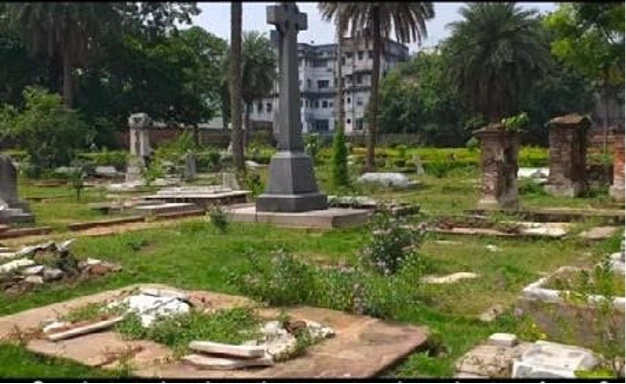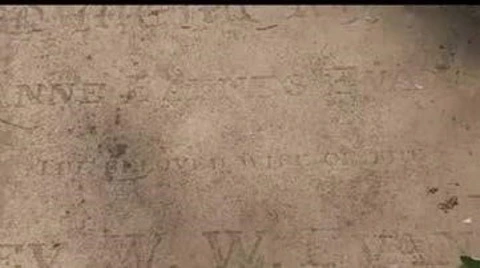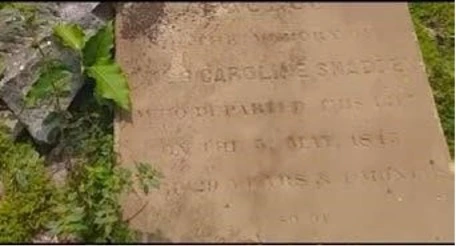Re-reading Histories through Silences and Deaths:
A Documentary Study on the Scottish Cemetery in Kolkata
Sayan Dey*
This short piece focuses on my documentary research project that I conducted in the year 2019 about the history and contributions of Scottish women in Bengal. The documentary research† was centered on the Scottish Cemetery in Kolkata. The piece widely focuses on two aspects—why the research was conducted in a cemetery and what was the outcome of this research.
PURPOSE
Usually, different forms of historical narratives across the globe are either interpreted in a textual manner or in an oral manner. But, beyond the conventional textual and oral interpretations of histories, there exists a lot of historical narratives in silences and deaths. To elaborate further, every form of historical incident does not need to be documented textually and orally as textbooks, audios and videos, but can also be documented as artworks, architectural constructions, wall writings, grave writings and many more ways. On a similar note, the history of the Scottish women in Bengal and their contributions towards the social, cultural, medical and gendered development of colonial Bengal, especially of the local women, hardly exists in the oral and written forms. Except a few scattered and poorly archived handwritten documents, most of the documentations can be located on the gravestones in the Scottish Cemetery of Kolkata.

OUTCOME
While conducting this research, I found that the existing historical documents on the Scottish women of Bengal portrays the women in a very derogatory and unimportant manner as mere assistants, wives, girlfriends and servants of the white Scottish colonial men. Such a portrayal is not only derogatory, but also distortive in many ways because the gravestones of the Scottish women in the cemetery reveal that they were involved in multiple professions as teachers, piano tuners, spiritual thinkers, pianists, nurses, social workers and many more. I also found out that several Scottish women arrived in Bengal exclusively for professional purposes but did not get a job, remaining at the mercy of their male partners or masters, as often portrayed by many historical documents. During a series of visits to the Scottish Cemetery, I documented the various professional, personal and the historical narratives of the Scottish women through the fragmented narratives that are etched on their respective gravestones. Due to lack of maintenance, many gravestones lie in a broken state. Prior to this documentary research project, a general archival project on the Scottish Cemetery of Kolkata was collectively carried out by the UK–India Education and Research Initiative (UKIERI) and Presidency University, Kolkata. But, my documentary project specifically focused on the selective gravestones of Scottish women.

Gravestone of Anne Evans: Anne arrived in Calcutta with her husband in 1840 and she worked at the Baptist Missionary Society. She worked for the socio-economic welfare of the poor and the local Indian women in Bengal.

Gravestone of Dorothea Henrietta Seymour: Dorothea was a schoolteacher in one of the missionary schools of Calcutta. Among her students, she is still remembered as a very humble and kindhearted person.
Around 12 gravestones of Scottish women were analysed and they were selected on the basis of the clarity and visibility of the gravestones. The gravestones were identified through a list that was available at the cemetery. The documentation was carried out in the form of note-making, photographs and video clips. The entire documentary was shot through a mobile phone. Besides unfolding the history, professions and contributions of the Scottish women of Bengal, another purpose that came up while conducting this research is the role of Scottish women in the European colonial expansion in Bengal.
It is crucial to note that my purpose of focusing on the different professional involvements of the Scottish women in Bengal is to appreciate their socio-cultural contributions, especially in the fields of women’s health and education on the one side, and expose their contributions towards colonial expansion of Bengal on the other.

Gravestone of Christina Rodger Brighton: Christina was a social worker who worked for the locals who suffered from epidemics like cholera, malaria, diarrhea and influenza.

Gravestone of Caroline Smadden: Caroline Smadden arrived in Calcutta with her father in 1825 and worked as an apothecary in a Christian missionary hospital until her death.
I believe that the documentary research project, by inviting individuals to re-read histories through silences and deaths, will open a creative avenue for conducting historical research beyond the mainstream ways of text-centric research processes

*Sayan Dey grew up in Kolkata, West Bengal and is currently working as a Postdoctoral Fellow at Wits Centre for Diversity Studies, University of Witwatersrand. He is also a Faculty Fellow, The Harriet Tubman Institute, York University, Canada. Some of his published books are: History and Myth: Postcolonial Dimensions (Vernon Press, 2020), Myths, Histories and Decolonial Interventions: A Planetary Resistance (Routledge, 2022), and Green Academia: Towards Eco-friendly Education Systems (Routledge, 2022). His areas of research interests are postcolonial studies, decolonial studies, critical race studies, food humanities and critical diversity literacy. He can be reached at: www.sayandey.com.
† For the full documentary, visit:
